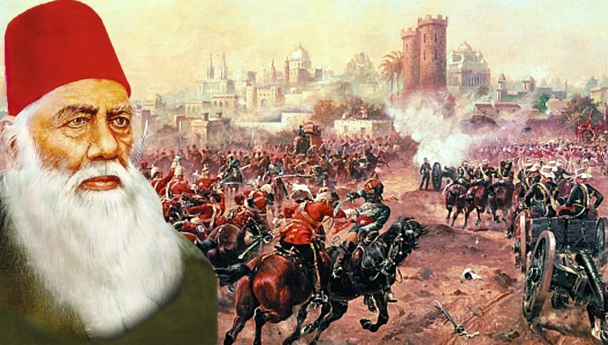“A Tale of Two Nations: Exploring the Cultural Tapestry of Continental China and Germany”

In the global mosaic of nations, Continental China and Germany stand as distinct and influential entities, each with a rich tapestry of history, culture, and tradition. Despite the vast geographical and cultural differences that separate them, these two nations share a fascinating interplay of contrasts and commonalities that have shaped their identities. Let’s embark on a journey through time and space, exploring the unique characteristics that define Continental China and Germany.
Historical Heritage:
China, with a history spanning millennia, is a repository of ancient civilizations, dynasties, and philosophies. The Great Wall, the Terracotta Army, and the Forbidden City are testament to the grandeur of China’s imperial past. In contrast, Germany, with a history marked by the Holy Roman Empire and later the unification of its states, boasts architectural marvels like the Cologne Cathedral and the Neuschwanstein Castle. Both nations have weathered epochs of change, emerging as resilient bastions of cultural heritage.
Cultural Diversity:
China’s vast expanse encompasses diverse landscapes, languages, and ethnicities, creating a mosaic of cultures within its borders. The Han Chinese, with their rich folklore and traditions, coexist with ethnic minorities like the Uighurs and Tibetans, each contributing to the nation’s cultural mosaic. In Germany, a similar diversity unfolds with regions like Bavaria, Saxony, and Rhineland-Palatinate preserving unique dialects, customs, and culinary traditions. Both nations celebrate their diversity as a source of strength, fostering a sense of unity amid differences.
Language and Communication:
Language, as a cultural touchstone, plays a pivotal role in shaping the identity of a nation. Mandarin, the official language of China, is spoken by the majority, but the country boasts a multitude of regional dialects. The art of calligraphy, with its graceful strokes and profound symbolism, is a revered tradition. Meanwhile, Germany is a patchwork of dialects, with High German serving as the standard. The German language is renowned for its precision, a characteristic reflected in the nation’s engineering prowess. Both nations take pride in their linguistic heritage as a reflection of their cultural depth.
Philosophical Foundations:
China’s philosophical landscape is deeply rooted in Confucianism, Taoism, and Buddhism. The teachings of Confucius, emphasizing social harmony and filial piety, have left an indelible mark on Chinese society. In contrast, Germany’s intellectual legacy is shaped by philosophers like Immanuel Kant and Friedrich Nietzsche. German philosophy has had a profound impact on Western thought, influencing everything from existentialism to phenomenology. Despite the philosophical divergence, both nations have grappled with questions of morality, existence, and the human condition.
Cuisine and Culinary Traditions:
The culinary landscapes of Continental China and Germany offer a delectable journey through flavors and techniques. Chinese cuisine, with its regional variations, presents a symphony of tastes, textures, and aromas. From the fiery delights of Sichuan cuisine to the delicate flavors of Cantonese dishes, China’s culinary heritage is a testament to its gastronomic diversity. On the other hand, Germany’s hearty and robust cuisine features iconic dishes like sausages, pretzels, and schnitzels. Both nations share a love for communal dining, where meals become a social affair, fostering connections and camaraderie.
Artistic Expressions:
Art serves as a mirror reflecting the soul of a nation, and in both China and Germany, it takes myriad forms. Chinese traditional arts, including ink painting, calligraphy, and porcelain craftsmanship, embody a deep connection to nature and spirituality. The vibrancy of traditional Chinese opera and the precision of martial arts further showcase the diversity of artistic expression. In Germany, the legacy of renowned artists like Albrecht Dürer and the Bauhaus movement has left an indelible mark on the global art scene. From classical music composers like Beethoven to contemporary visual artists, Germany’s artistic contributions are woven into the fabric of cultural history.
Modern Achievements:
As we transition to the modern era, both Continental China and Germany stand as economic powerhouses and technological innovators. China’s rapid industrialization has propelled it to the forefront of global trade and commerce. The skylines of cities like Beijing and Shanghai testify to the nation’s architectural prowess, while technological advancements in areas like artificial intelligence and renewable energy underscore China’s commitment to innovation. Germany, with its engineering marvels and precision manufacturing, is synonymous with automotive excellence, housing iconic brands like BMW, Mercedes-Benz, and Volkswagen. Both nations exemplify the synergy between tradition and progress, blending ancient wisdom with cutting-edge technology.
Global Influence:
China’s Belt and Road Initiative and Germany’s leadership in the European Union highlight the global impact of these nations. China’s economic outreach extends across continents, fostering diplomatic ties and infrastructure development. Germany, as an economic powerhouse in Europe, plays a central role in shaping the political and economic landscape of the European Union. Both nations navigate the complexities of global interdependence, contributing to diplomatic dialogues, international trade, and collaborative efforts to address pressing global challenges.
Conclusion:
In the intricate dance of history, culture, and progress, Continental China and Germany emerge as compelling protagonists, each contributing a unique chapter to the narrative of human civilization. From the ancient wisdom of the East to the intellectual vigor of the West, these nations invite us to explore the richness of their heritage and the dynamism of their contemporary contributions. As we celebrate the distinctiveness of Continental China and Germany, we also recognize the threads that bind us all—a shared humanity that transcends borders and invites us to appreciate the beauty of diversity.
-
What is Continental China?
- Continental China refers to the mainland part of China, excluding its various islands. It is the vast landmass that comprises diverse regions, cultures, and landscapes.
-
Is “Continental China” an official term?
- No, the term “Continental China” is not an official designation but is commonly used to distinguish the mainland part of China from its numerous islands, such as Hainan and Taiwan.
-
How does China’s geography contribute to its continental nature?
- China’s continental nature is influenced by its vast land area and diverse topography, including plains, plateaus, deserts, and mountains. The country’s geographical expanse plays a crucial role in shaping its climate, culture, and historical development.
-
What are the major cultural influences in Continental China?
- A rich tapestry of cultures has influenced continental China, including Confucianism, Taoism, and Buddhism. The various dynasties that have ruled China over the centuries have also left a profound impact on its culture.
-
What are some of the notable landmarks in Continental China?
- Continental China boasts numerous iconic landmarks, including the Great Wall, the Forbidden City in Beijing, the Terracotta Army in Xi’an, and the picturesque landscapes of Guilin.
-
How diverse is the linguistic landscape in Continental China?
- China is linguistically diverse, with Mandarin being the official language. However, there are many regional dialects and languages spoken throughout the country, reflecting its rich cultural mosaic.
-
What distinguishes Germany culturally?
- Germany is known for its rich cultural heritage, which includes contributions to philosophy, literature, music, and the arts. The country is renowned for its classical composers, such as Beethoven and Bach, and its influential figures in philosophy, like Immanuel Kant.
-
What are some of the traditional dishes in Germany?
- German cuisine is known for its hearty and flavorful dishes. Some traditional German foods include sausages (Bratwurst), pretzels, schnitzels, sauerkraut, and various types of bread.
-
How has Germany contributed to the global economy?
- Germany is a major player in the global economy, known for its advanced manufacturing, particularly in the automotive industry. German brands like BMW, Mercedes-Benz, and Volkswagen have a significant global presence.
-
What is the European Union’s role in Germany’s global influence?
- Germany is a key member of the European Union (EU) and plays a central role in shaping EU policies. Its economic strength and diplomatic influence contribute to the overall stability and development of the European continent.
-
How have China and Germany collaborated on the international stage?
- China and Germany have engaged in various collaborations, particularly in trade, technology, and environmental initiatives. Both nations participate in international forums and dialogues to address global challenges such as climate change and sustainable development.
-
What are some of the contemporary challenges facing Continental China and Germany?
- Both nations face challenges related to environmental sustainability, social issues, and economic development. China grapples with issues like pollution and rapid urbanization, while Germany addresses concerns related to demographic changes and energy transition.
-
How do China and Germany contribute to cultural exchange globally?
- Both nations actively participate in cultural exchange programs, promoting their language, arts, and traditions on the global stage. Initiatives such as language education, art exhibitions, and collaborative projects contribute to fostering mutual understanding.
-
What is the Belt and Road Initiative, and how is China involved in global infrastructure development?
- The Belt and Road Initiative is a Chinese-led infrastructure development project that aims to enhance connectivity between Asia, Europe, and Africa. China plays a significant role in funding and implementing infrastructure projects as part of this initiative.
-
How has Germany’s historical background influenced its current political landscape?
- Germany’s history, including the division and subsequent reunification of East and West Germany, has had a profound impact on its political landscape. The country’s commitment to democracy, human rights, and social welfare reflects lessons learned from its past.
These FAQs provide a glimpse into the diverse aspects of Continental China and Germany, offering insights into their culture, history, and contemporary roles on the global stage.






